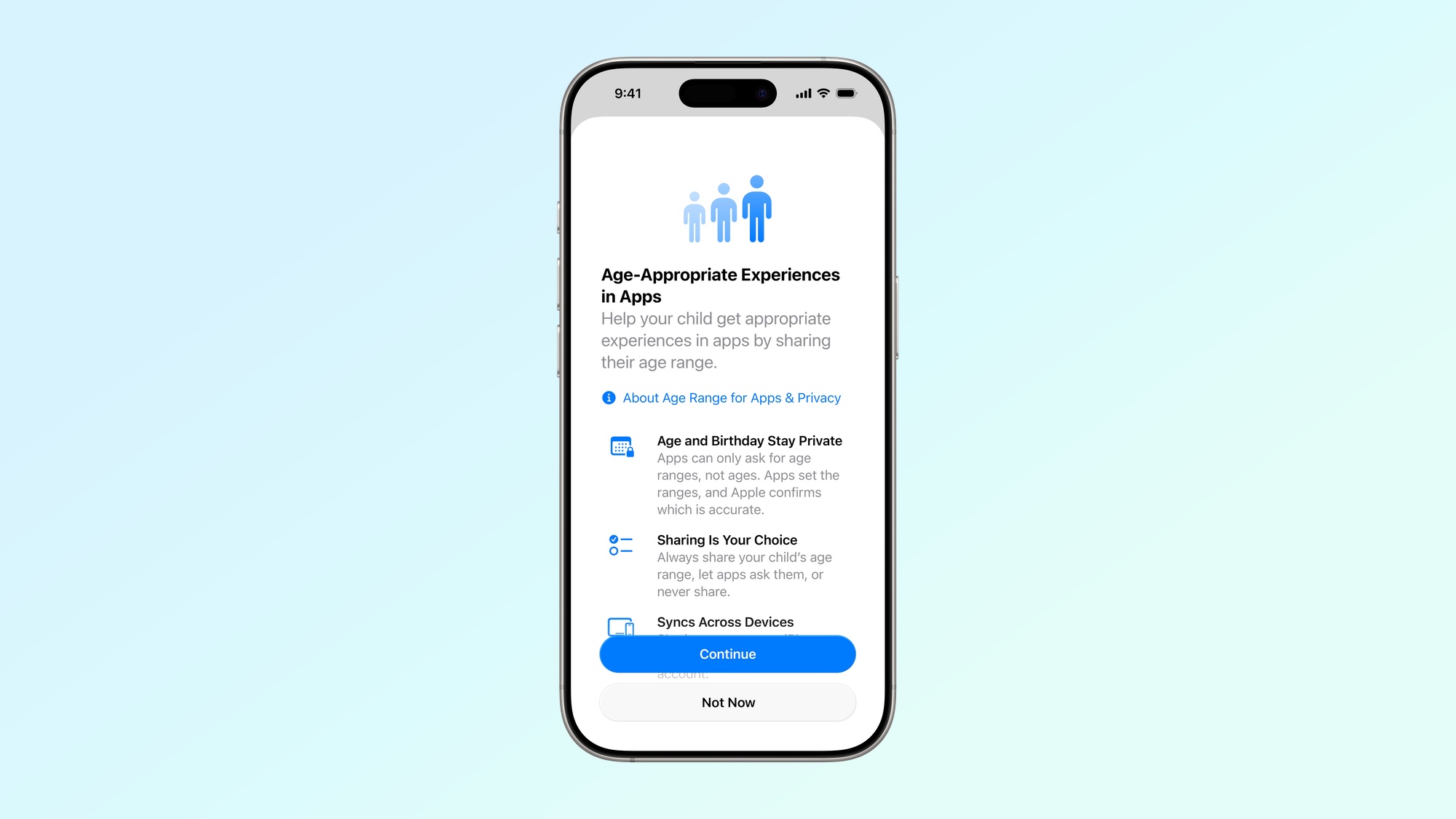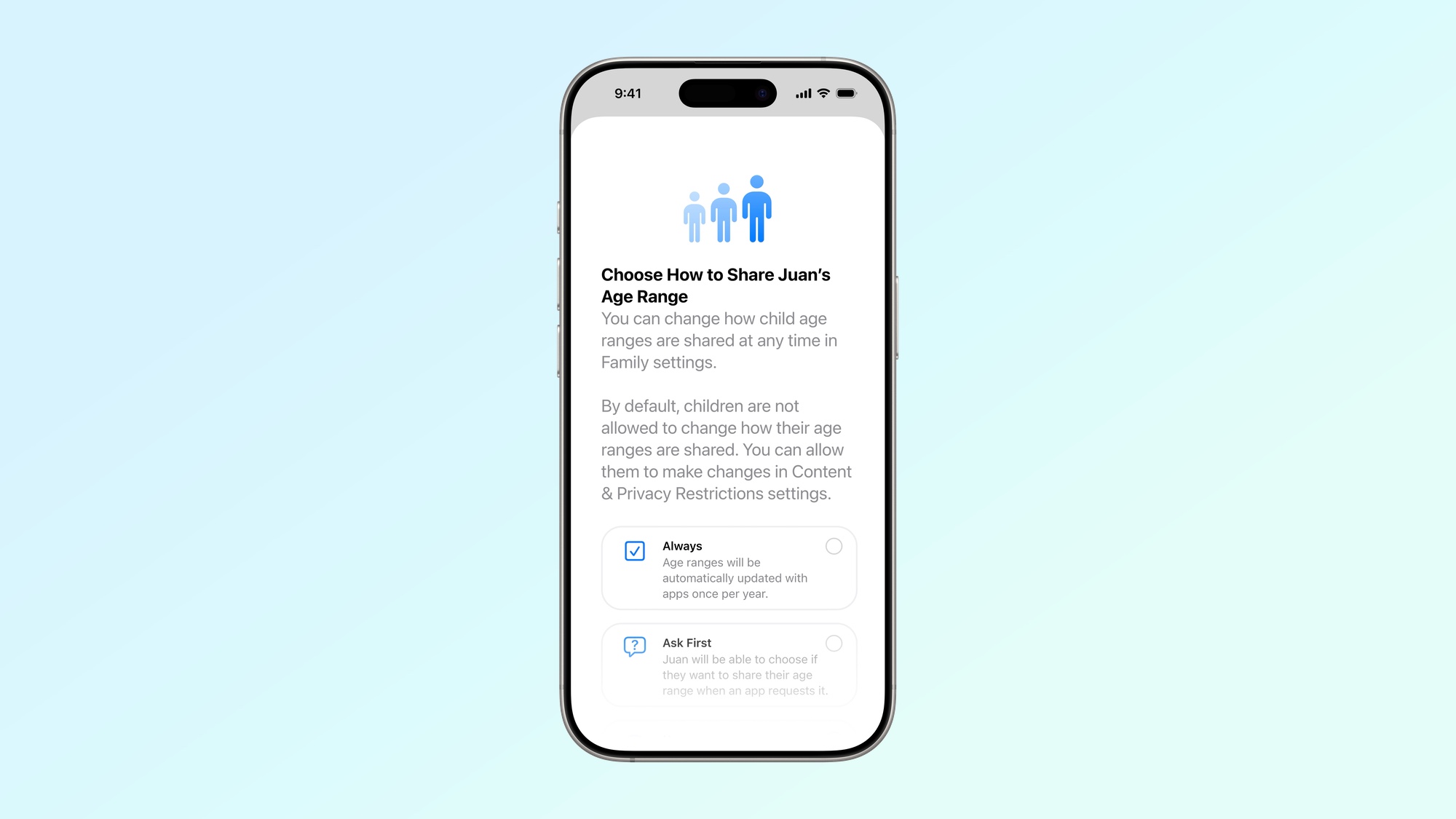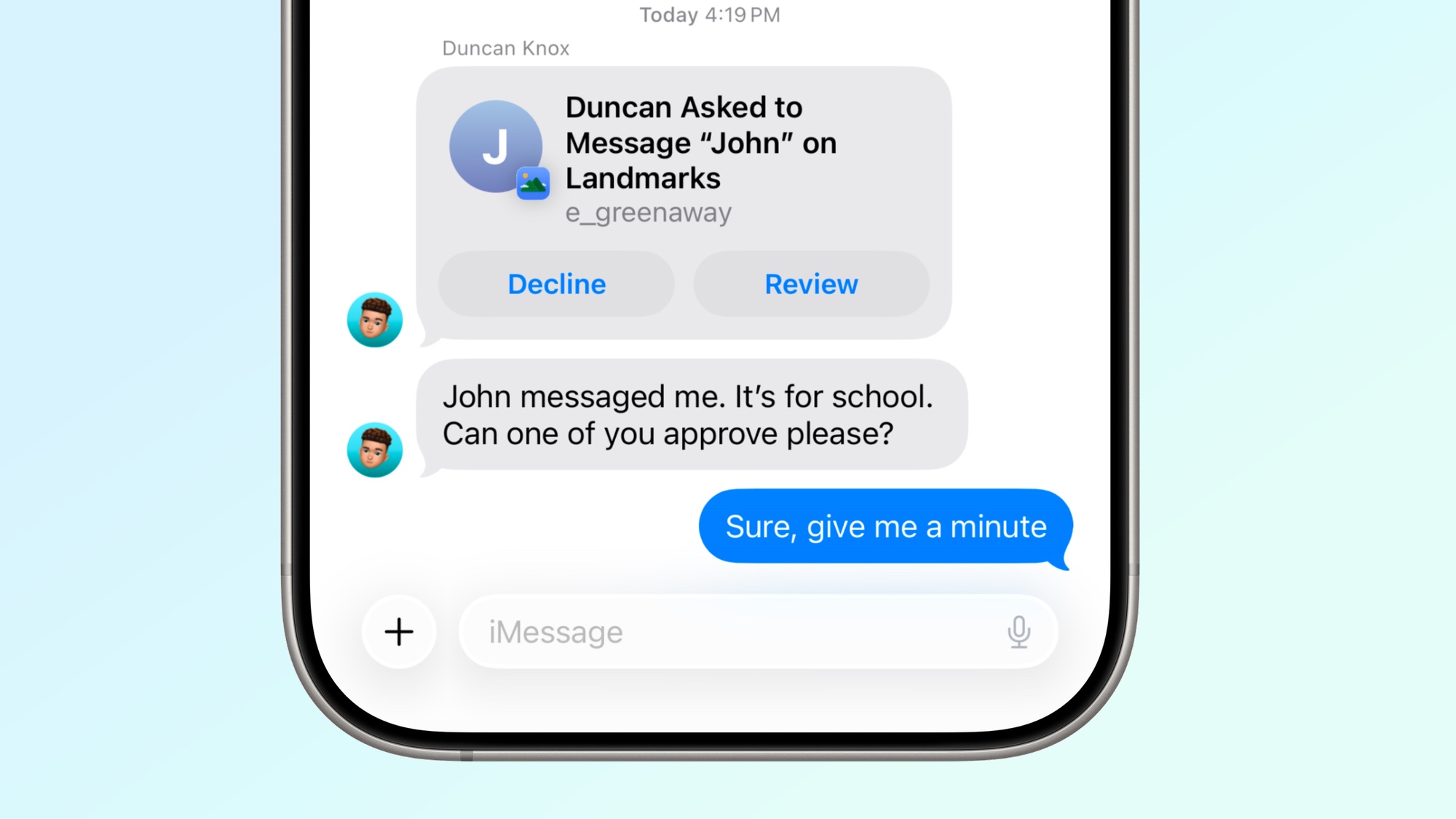Apple just announced 5 big upgrades to protect your kids online — here's what's coming

Apple's fall software releases previewed at WWDC 2025 last week include a redesigned interface across all of the company's different platforms as well as a slew of device-specific features. But they'll also bring new controls and more nuance to the existing tools for parents who manage their kids' Apple accounts.
Apple announced the additional features to its Child Accounts today (June 17), with a focus on making sure that children and teens are accessing age-appropriate material in the company's App Store. The move comes after ongoing criticism from advocacy groups that the existing controls haven't been rigorous enough.
Specifically, late last year, the Wall Street Journal published a report in which digital safety advocates cited a large percentage of age-inappropriate apps being rated as suitable for children. In a 24-hour period, the group found roughly 200 apps — a quarter of those reviewed — that presented kids with content on dieting, beauty filters, violent games and anonymous chat features.
Apple's announcement of its beefed-up child safety and parental control tools didn't directly address those complaints, but the majority of the five additions Apple highlighted do give parents more control over what their kids can see while also safeguarding the privacy of underage users. The new capabilities will be part of iOS 26, iPadOS 26, macOS 26, watchOS 26, tvOS 26 and visionOS 26, when those software updates arrive in the fall.
The six updates are currently available as developer betas, with public betas coming next month, for parents who want to give the new capabilities a try ahead of their full release. Here's what's coming in those releases.
Simplified Child Account management

Apple already requires parents to set up Child Accounts for anyone 13 years and younger, and you also have the option of having those accounts in place for teenagers. Child Accounts let parents restrict app downloads, among other parental control features.
While you've been required to set up a Child Account, you didn't necessarily have to complete the process by setting up filters. An update to iOS 18.4, iPadOS 18.4 and macOS 15.4 closed that loophole somewhat by making sure that child-appropriate default settings were enabled even if you skipped that part of the process.
Get instant access to breaking news, the hottest reviews, great deals and helpful tips.
This year's updates look to refine that even further, as setting the age of the device user will prompt parents of kids 13 and under to connect their child's account to a Family group. That, in turn, will automatically convert that account into a Child Account with default protections in place.
Default protections for teens
In an extension of the Child Account defaults for web content filters and app restrictions, Apple is adding protections for accounts of anyone aged 13 to 17. When those users set up their accounts by adding their age, age-appropriate restrictions will be turned on by default. Apple says this will happen whether the account is a standard Apple Account or a Child Account.
Sharing age ranges with app makers

Apple is adding a feature in which parents can let kids with a Child Account share their age range with app makers, but in a way that doesn't reveal personal data like an actual birth date. The idea is that a shared age range can ensure that only age-appropriate material is accessible while also protecting user privacy.
This feature offers some granular control, too, with parents deciding whether age ranges can always be shared or only for each app request; they can also decline to share age ranges.
More granular age ratings
Currently, the App Store has four age-specific ratings — 4+, 9+, 12+ and 17+ — along with an unrated setting. You can use age ratings to manage features such as screen time and app download requests.
The upcoming software updates are adding three more age ratings, specifically aimed at teenagers. Apps will also be designated as 13+, 16+ and 18+, to better ensure that teens are seeing age-appropriate content.
Updated Communication Limits

The Communication Limits feature lets parents control when kids can use apps like Phone, FaceTime and Messages to chat with others. Now Apple's adding the ability to control who they can talk to as well.
Specifically, children will have to send requests when communicating with a new number, and parents can tap to approve in Messages, similar to how app download requests work now. Apple is also extending that capability to developers to include in third-party apps.
Other changes
Apple announced some other additions to its parental controls tools centered around the App Store, communication features and Screen Time. App Store pages will now indicate when an app features user-generated content, while apps with age restrictions that exceed the limit parents set won't show up in parts of the App Store like Today, Games and Apps tabs.
Parents will have the ability to grant exceptions for app download requests with higher age ratings, but they'll also be able to revoke permission via Screen Time. Apple's Communication Safety feature is also expanding to block out any nudity in FaceTime calls and blur nudity in Photos' Shared Albums.
More from Tom's Guide
- 5 minor iOS 18.5 features that are actually huge
- Best parental control apps for Android and iPhone
- How to set time limits with the iPhone's Screen Time feature
Philip Michaels is a Managing Editor at Tom's Guide. He's been covering personal technology since 1999 and was in the building when Steve Jobs showed off the iPhone for the first time. He's been evaluating smartphones since that first iPhone debuted in 2007, and he's been following phone carriers and smartphone plans since 2015. He has strong opinions about Apple, the Oakland Athletics, old movies and proper butchery techniques. Follow him at @PhilipMichaels.
You must confirm your public display name before commenting
Please logout and then login again, you will then be prompted to enter your display name.

